Root Canal Cleaning and Disinfection
WATERLASE ENDODONTIC Protocol
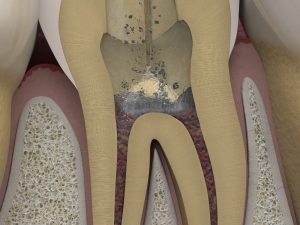
Optional Step: Coronal Conditioning
- Tip: RFT2-17mm or RFT3-17mm
- Power: 1.5W
- Energy: 75mJ
- Air: 20
- Water: 90
- Pulse: 20Hz
- Mode: H
Hover the laser tip ~2mm above the canal orifice. Activate the laser for 30 seconds, rest, then activate for 30 seconds more. This step removes biological debris and calcifications in the chamber.
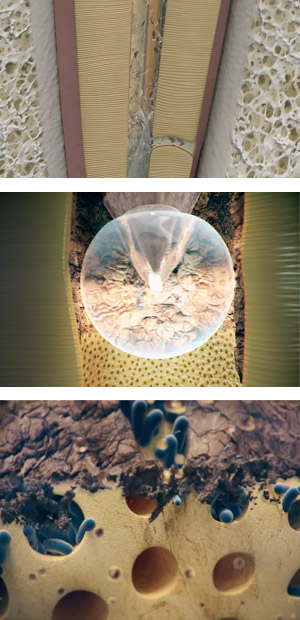
Step 1: Intracanal Debridement
- Tip: RFT2-21mm, RFT2-25mm (0.25mm diameter)
- Power: 1.25W
- Energy: 25mJ
- Air: 20
- Water: 20
- Pulse: 50Hz
- Mode: H
Prepare the canals to working length with instrumentation of choice, and flood the canal with water.
Place tip 1-5mm short of working length, or
level of obstruction. Activate the laser ONLY while withdrawing the tip. Withdraw at 2mm/sec.
The laser energy vaporizes water and forms a vapor bubble at the tip. When the bubble collapses, a pressure wave & cavitation microbubbles are created.1
Cavitation bubbles and pressure waves clean canal walls by removing smear layer and destroying biofilm.2
Dentinal tubules are opened, facilitating deeper lateral cleaning through the unique YSGG wavelength and proprietary Radial Firing Tip.2, 3
Repeat the Intracanal Debridement step 3-4 times per canal.
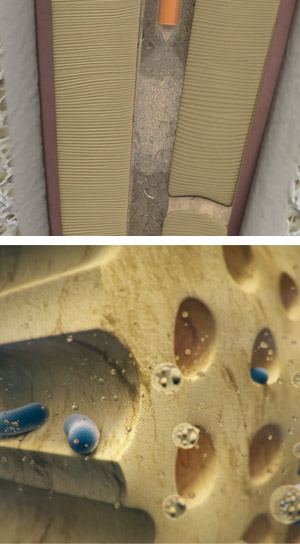
Step 2: Radial Disinfection
- Tip: RFT2
- Power: 1.25W
- Energy: 25mJ
- Air: 0 (Off)
- Water: 0 (Off)
- Pulse: 50Hz
- Mode: H
Flood the canals with irrigant of choice. Place tip 1-5mm short of working length. The laser energy creates turbulent flow in the wet canal, eliminating possible apical vapor lock.4 Activate the laser ONLY while withdrawing the tip. Withdraw at 2mm/sec.
The laser energy creates cavitation effects and pressure waves, causing deeper irrigant penetration into the dentinal tubules, dislodging bacteria from tubule walls, enhancing irrigant efficacy, and further reducing bacteria.3
The Radial Disinfection step is repeated 3 times per canal and per irrigant.
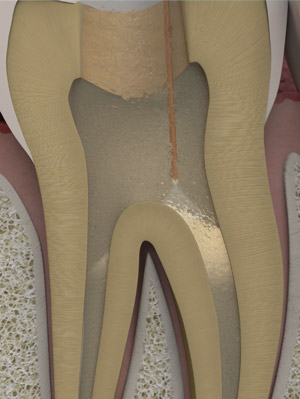
Step 3: Laser Rinse (Optional)
- Tip: RFT2
- Power: 1.5W
- Energy: 75mJ
- Air: 20
- Water: 90
- Pulse: 20Hz
- Mode: H
To remove chemical irrigants, hover the laser tip ~2mm above the canal orifice. Activate the laser for 30 seconds, rest, then activate for 30 seconds more.
Use paper points to dry canal, then seal and obturate using your preferred technique.
- Data on file.
- Montero-Miralles P, Torres-Lagares D, Segura-Egea J-J, Serrera-Figallo M-A, Gutierrez-Perez J-L, Castillo-Dali G. Comparative Study of Debris and Smear Layer Removal with EDTA and Er,Cr:YSGG Laser. Journal of Clinical and Experimental Dentistry. 2018;10(6):598-602. doi:10.4317/jced.54936
Juric IB, Plecko V, Anic I. Antimicrobial Efficacy of Er,Cr:YSGG Laser-Activated Irrigation Compared with Passive Ultrasonic Irrigation and RinsEndo((R)) Against Intracanal Enterococcus faecalis. Photomedicine and Laser Surgery. 2014;32(11):600-605. doi:10.1089/pho.2014.3767
El-Gendy SES, Moussa SM, Zaazou AM, Meheissen MA. Antibacterial Effect of Er,Cr:YSGG Laser Under Various Irradiation Conditions in Root Canals Contaminated with Enterococcus Faecalis (In vitro study). Alexandria Dental Journal. 2017;42(12):108-112.
De Moor RJG, Meire MA. Value Added Cleaning and Disinfection of the Root Canal: Laser-Activated Irrigation and Laser-Induced Photoporation. Progress in Biomedical Optics and Imaging – Proceedings of SPIE. 2016;9670:1-8. doi:10.1117/12.2189552
- Jonathan R, Mathew J, Suganthan P. Comparative Evaluation of the Antibacterial Efficacy of Four Different Disinfection Techniques in Minimally Instrumented Experimentally Infected Root Canals: International Journal of Laser Dentistry. 2013;3(2):49-54.
Chaudhry S, Yadav S, Talwar S, Verma M. Effect of EndoActivator and Er,Cr:YSGG Laser Activation of Qmix, as Final Endodontic Irrigant, on Sealer Penetration: A Confocal Microscopic Study. Journal of Clinical and Experimental Dentistry. 2017;9(2):0-0. doi:10.4317/jced.5
- Peeters HH, Gutknecht N. Efficacy of Laser-Driven Irrigation Versus Ultrasonic in Removing an Airlock from the Apical Third of a Narrow Root Canal. Australian Endodontic Journal. 2014;40(2):47-53. doi:10.1111/aej.120163270

Optional Step: Coronal Conditioning
- Controls: Endo > Root Canal > Clean > Advanced
- Tip: RFT2-17mm or RFT3-17mm
- Power: 1.5W
- Energy: 75mJ
- Air: 20
- Water: 70 (Maximum)
- Pulse: 20Hz
- Mode: H
Hover the laser tip ~2mm above the canal orifice. Activate the laser for 30 seconds, rest, then activate for 30 seconds more. This step removes biological debris and calcifications in the chamber.

Step 1: Intracanal Debridement
- Controls: Perio > Repair > Final Debridement > Advanced
- Tip: RFT2-21mm, RFT2-25mm (0.25mm diameter)
- Power: 1.25W
- Energy: 25mJ
- Air: 20
- Water: 20
- Pulse: 50Hz
- Mode: H
Prepare the canals to working length with instrumentation of choice, and flood the canal with water.
Place tip 1-5mm short of working length, or level of obstruction. Activate the laser ONLY while withdrawing the tip. Withdraw at 2mm/sec.The laser energy vaporizes water and forms a vapor bubble at the tip. When the bubble collapses, a pressure wave & cavitation microbubbles are created.1
Cavitation bubbles and pressure waves clean canal walls by removing smear layer and destroying biofilm.2
Dentinal tubules are opened, facilitating deeper lateral cleaning through the unique YSGG wavelength and proprietary Radial Firing Tip.2, 3
Repeat the Intracanal Debridement step 3-4 times per canal.

Step 2: Radial Disinfection
- Controls: Perio > Repair > Final Debridement > Advanced
- Tip: RFT2
- Power: 1.25W
- Energy: 25mJ
- Air: 0 (Off)
- Water: 0 (Off)
- Pulse: 50Hz
- Mode: H
Flood the canals with irrigant of choice. Place tip 1-5mm short of working length. The laser energy creates turbulent flow in the wet canal, eliminating possible apical vapor lock.4 Activate the laser ONLY while withdrawing the tip. Withdraw at 2mm/sec.
The laser energy creates cavitation effects and pressure waves, causing deeper irrigant penetration into the dentinal tubules, dislodging bacteria from tubule walls, enhancing irrigant efficacy, and further reducing bacteria.3
The Radial Disinfection step is repeated 3 times per canal and per irrigant.

Step 3: Laser Rinse (Optional)
- Controls: Endo > Root Canal > Clean > Advanced
- Tip: RFT2
- Power: 1.5W
- Energy: 75mJ
- Air: 20
- Water: 70 (Maximum)
- Pulse: 20Hz
- Mode: H
To remove chemical irrigants, hover the laser tip ~2mm above the canal orifice. Activate the laser for 30 seconds, rest, then activate for 30 seconds more.
Use paper points to dry canal, then seal and obturate using your preferred technique.
- Data on file.
- Montero-Miralles P, Torres-Lagares D, Segura-Egea J-J, Serrera-Figallo M-A, Gutierrez-Perez J-L, Castillo-Dali G. Comparative Study of Debris and Smear Layer Removal with EDTA and Er,Cr:YSGG Laser. Journal of Clinical and Experimental Dentistry. 2018;10(6):598-602. doi:10.4317/jced.54936
Juric IB, Plecko V, Anic I. Antimicrobial Efficacy of Er,Cr:YSGG Laser-Activated Irrigation Compared with Passive Ultrasonic Irrigation and RinsEndo((R)) Against Intracanal Enterococcus faecalis. Photomedicine and Laser Surgery. 2014;32(11):600-605. doi:10.1089/pho.2014.3767
El-Gendy SES, Moussa SM, Zaazou AM, Meheissen MA. Antibacterial Effect of Er,Cr:YSGG Laser Under Various Irradiation Conditions in Root Canals Contaminated with Enterococcus Faecalis (In vitro study). Alexandria Dental Journal. 2017;42(12):108-112.
De Moor RJG, Meire MA. Value Added Cleaning and Disinfection of the Root Canal: Laser-Activated Irrigation and Laser-Induced Photoporation. Progress in Biomedical Optics and Imaging – Proceedings of SPIE. 2016;9670:1-8. doi:10.1117/12.2189552
- Jonathan R, Mathew J, Suganthan P. Comparative Evaluation of the Antibacterial Efficacy of Four Different Disinfection Techniques in Minimally Instrumented Experimentally Infected Root Canals: International Journal of Laser Dentistry. 2013;3(2):49-54.
Chaudhry S, Yadav S, Talwar S, Verma M. Effect of EndoActivator and Er,Cr:YSGG Laser Activation of Qmix, as Final Endodontic Irrigant, on Sealer Penetration: A Confocal Microscopic Study. Journal of Clinical and Experimental Dentistry. 2017;9(2):0-0. doi:10.4317/jced.5
- Peeters HH, Gutknecht N. Efficacy of Laser-Driven Irrigation Versus Ultrasonic in Removing an Airlock from the Apical Third of a Narrow Root Canal. Australian Endodontic Journal. 2014;40(2):47-53. doi:10.1111/aej.120163270
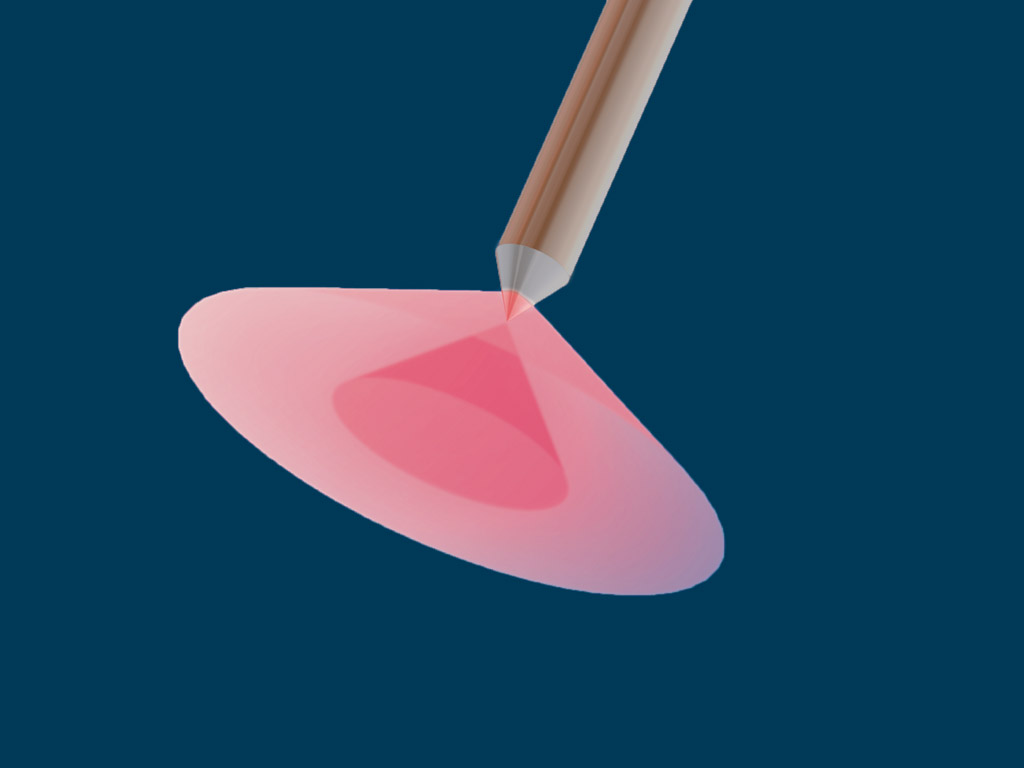
Get better disinfection, more predictability & reduced patient discomfort with Waterlase Endodontics.
- Conserve natural tooth structure during RCT, reducing risk of overshaping, and over-access that can lead to root fractures.
- Greater access to lateral canals and the critical apical third, with minimal tooth structure affected due to minimally invasive 1mm diameter access.
- Single-visit endo — fast procedures with reduced chemical medicaments.
Better Patient-Reported Outcomes
Waterlase lasers effectively fight endodontic infection and can perform disinfection and cleaning, open dentinal tubules, decontamination prior to obturation, pulpotomy and pulp extirpation, and smear layer removal in the canal.
Using patented radial firing tips to deliver laser energy in a 360-degree cone within the canal, Waterlase can have a dramatic, positive impact on clinical outcomes for endodontics.
Waterlase provides a more holistic approach, and patients treated with Waterlase typically recover quicker and report less pain. Clean deep into the dentinal tubules to kill bacteria and decrease reliance on chemical medicaments.
- Images 1-4 Courtesy of Francisco A. Banchs, DDS, DMD, MSc
- Images 5-7 Courtesy of Christo Janse van Rensburg, BChD
- Images 8-9 Courtesy of Dr. Isaac Kably M.
- Images 10 Courtesy of Dr. Win Nguyen
- Images 11 Courtesy of Dr. Charles Maupin


watch the VIDEOS
Fluid Dynamics in Action
Courtesy: Dr. Charles Maupin
Watch Live Demo
Courtesy: Dr. Charles Maupin
See a Clinical Case
Courtesy: Dr. Charles Maupin
Clinical animations
webinar on-demand
Lasers in Endodontics:
Safe, Efficient, Effective
With many new endodontic treatment options, it is important to choose new techniques based on clinical evidence and synergy within your current workflow.
Check out this free on-demand webinar with renowned endodontist, Dr. Charles Maupin! Discover how Waterlase endodontics can improve care.
Contact Us to Learn More
